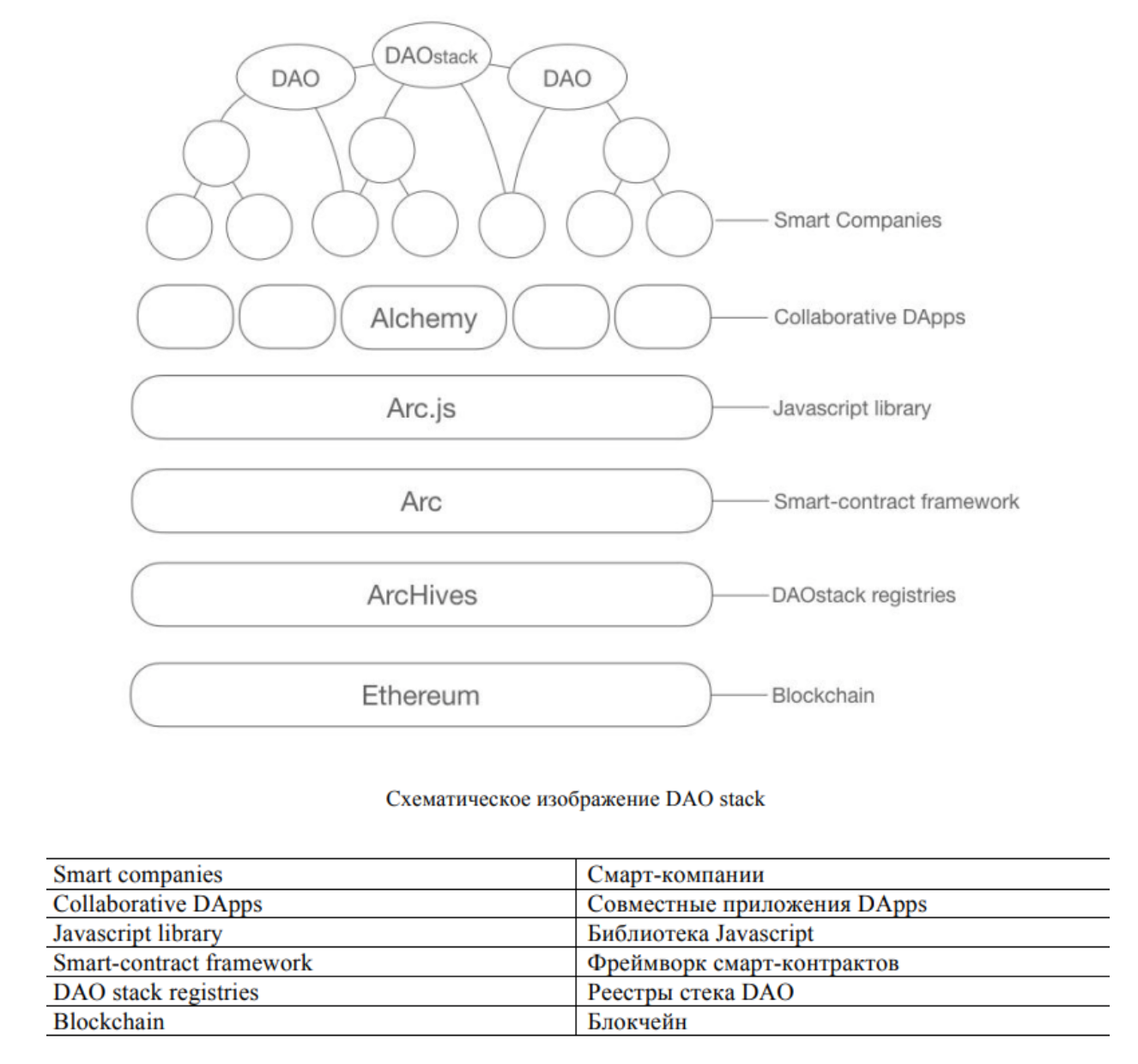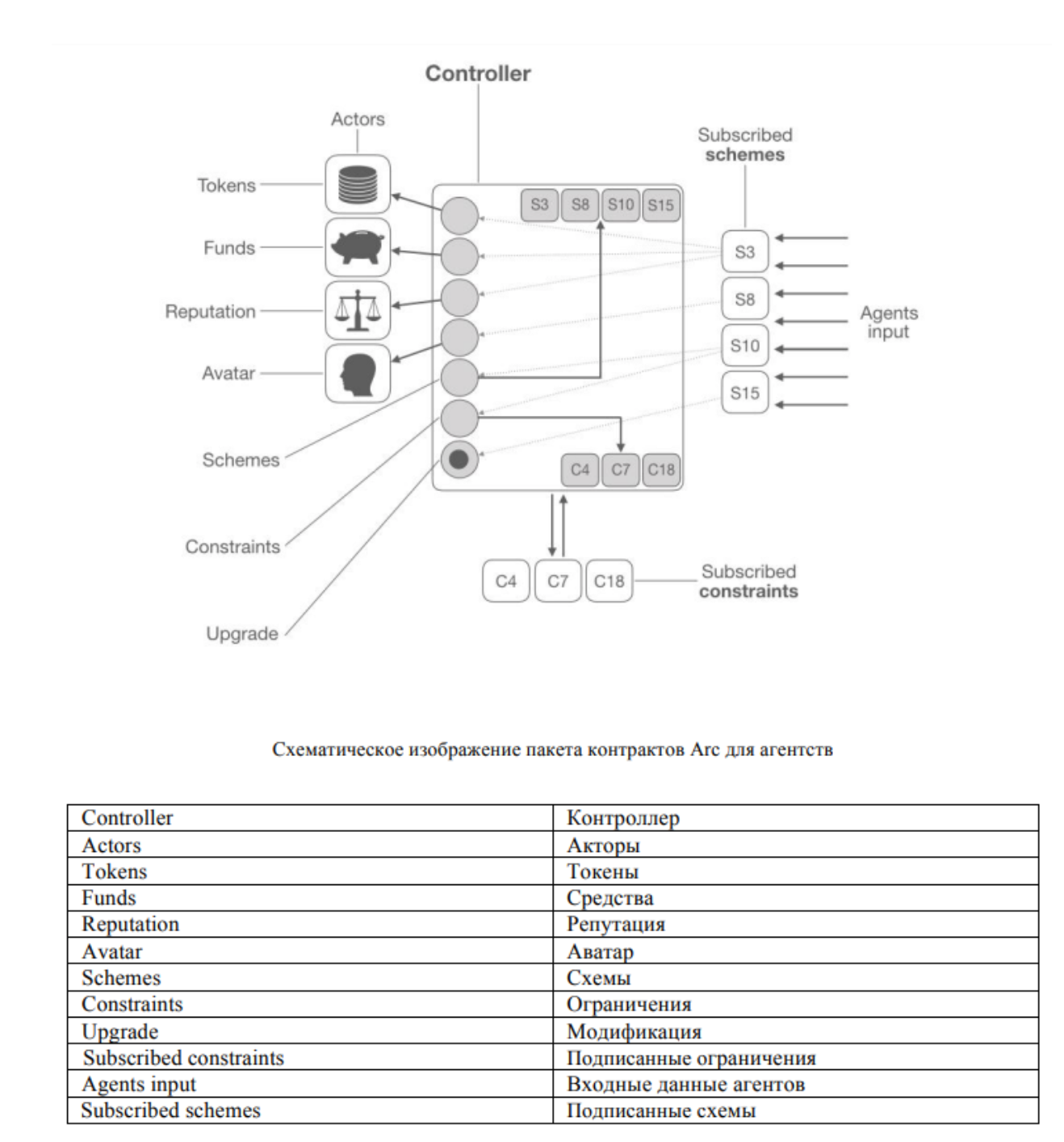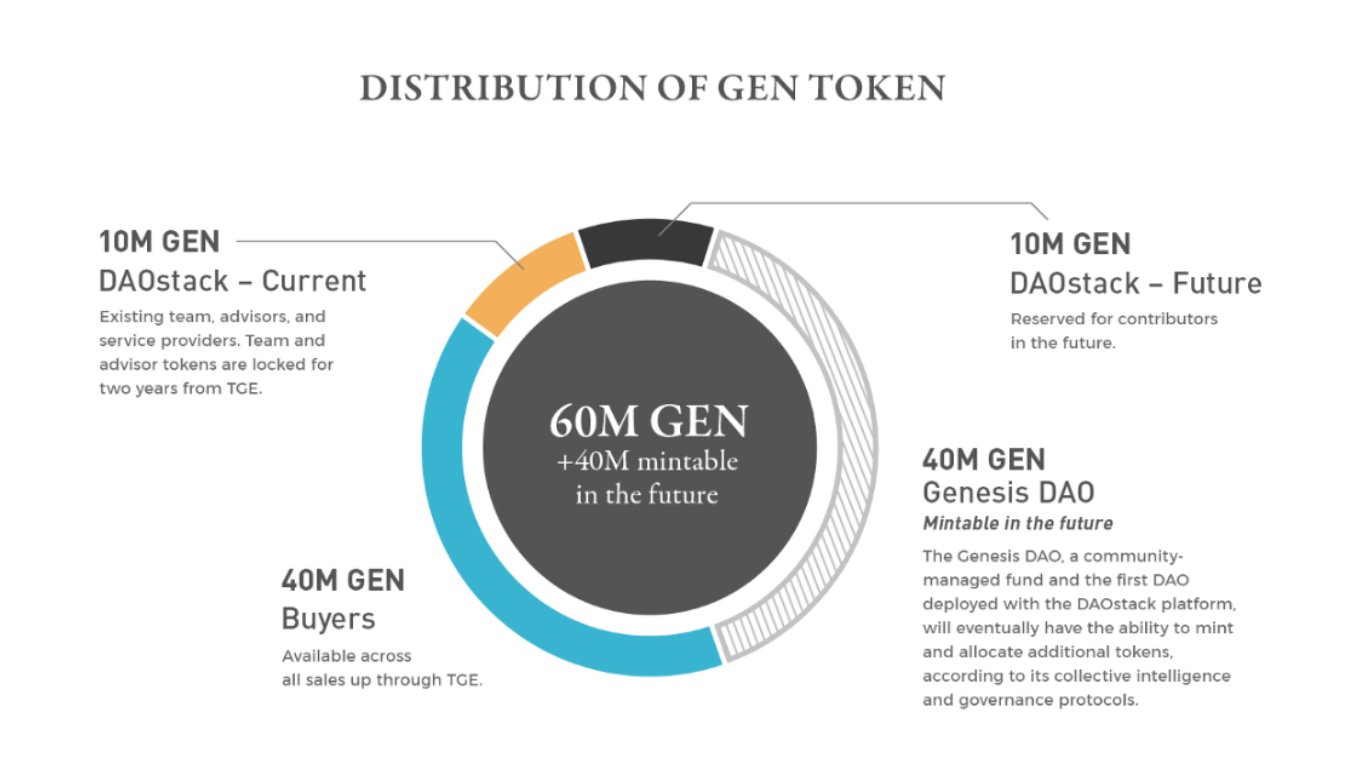Mankind is constantly creating new ways to organize and scale cooperation, starting from the primitive system, and ending with modern transnational companies. Thanks to the Internet, it became possible to exchange information in real time and not depend on borders. But at the same time, the Internet is deprived of an economic mechanism that allows coordinating global production. Everything changed with the advent of blocking technology: the world received a reliable, transparent and programmable accounting system. This achievement made it possible to realize the idea of creating a Decentralized Autonomous Organization (DAO).
DAO is an open, self-organized team that is united around a common goal and coordinated by economic incentives and written code.
DAOstack is an operating system for DAO. With its help, it is possible to combine the efforts of many developers to create decentralized applications. At the same time, ownership will be distributed among the participants, according to the value of their contribution. Collectors of curators will be able to create multi-element rating systems, and autonomous networks will manage collective investment funds. DAOstack develops the basic elements for future work processes.
DAO is an open, self-organized team that is united around a common goal and coordinated by economic incentives and written code.
DAOstack is an operating system for DAO. With its help, it is possible to combine the efforts of many developers to create decentralized applications. At the same time, ownership will be distributed among the participants, according to the value of their contribution. Collectors of curators will be able to create multi-element rating systems, and autonomous networks will manage collective investment funds. DAOstack develops the basic elements for future work processes.
Platform structure
DAOstack creates a set of tools for the creation, operation and management of DAO. It can be regarded as an analogue of Wordress in the field of DAO. The structure of the platform is shown in the figure below:

The DAOstack system is a collection of unique DAOs that interact with each other to maximize profits as a result of open and distributed collaboration. Technically, the platform consists of smart contracts based on the Solidity-Arc management framework. With its help, you can create, configure and manage DAO on Ethereum blockade. For data storage and retrieval, it is possible to use IPFS.
Users can work with such DAO in two ways:
directly, i.e., carry out transactions in the blockroom;
mediated - using a specific interface.
Users can work with such DAO in two ways:
directly, i.e., carry out transactions in the blockroom;
mediated - using a specific interface.
Participants in the DAOstack ecosystem can collaborate with other participants and create new TAOs using the joint DApp-Alchemy application. The application is based on Arc.js (JavaScript library). Thanks to this, developers can create joint applications on the basis of Arc without the use of the code Solidity and the blockbuster Efirium. ArcHives is a public set of registries managed by the DAOstack community.
Architecture
To understand the logical architecture and architecture of smart contracts Arc, consider the following scheme:

The main element of the agency is the contract of the controller. Its functions are controlled by a set of signed schemes.
Through functions, the controller issues commands to the contracts of the actors, which consist of:
/ printer tokens;
/ printer reputation;
/ wallet;
/ avatar;
/ functions of modernization of the control system;
/ technical architecture.
Through functions, the controller issues commands to the contracts of the actors, which consist of:
/ printer tokens;
/ printer reputation;
/ wallet;
/ avatar;
/ functions of modernization of the control system;
/ technical architecture.
Signed schemes are the only way to ensure interaction between agents and agencies. Each scheme has a set of functions that are managed through the implementation of transactions.
The controller manages a token printer (release and distribution of tokens among agents) and a reputation printer (responsible for the reputation of agents).
Avatar is the representative of the agency. He can perform any actions within the framework of the detachment. An avatar can also be an agent in other agencies.
The controller manages a token printer (release and distribution of tokens among agents) and a reputation printer (responsible for the reputation of agents).
Avatar is the representative of the agency. He can perform any actions within the framework of the detachment. An avatar can also be an agent in other agencies.
Example of interaction between platform elements
- The agent wishes to change the current bonus system to a new one in one particular DAO;
- The agent transfers the principles of the system to a smart contract by sending a transaction (for this, DApp can be used), and the necessary input data (agency name, number of tokens, recipient addresses, etc.);
- A vote is taken;
- If the request receives a sufficient number of votes, the bonus system will command the controller to execute this scheme. In turn, the controller gives the team a contract on the distribution of incentives under the new rules;
- All functions that are controlled by the controller are subject to global restrictions introduced in the DAO. Therefore, before the function starts, the controller starts global constraints, which should return False.
Details of ICO The
Token of the DAOstack ecosystem is Gen token (GEN). Token supports the ERC-20 standard and will be released by a non-profit company from Gibraltar DAOstack Limited.
Pre-sale was started on May 1, 2018, and is conducted within 48 hours. At this stage, a bonus of 10% is offered. The minimum purchase amount is 1 ETH. And ICO will start on May 8, 2018 at 4.00 GMT and will continue until Hard Cap is collected ($ 30,000,000) or 30 days, whichever comes first. At this stage, the minimum investment is 0.5 ETH.
In total it is planned to realize 40 million GEN for 30 million USD. Given that this includes private sales, Pre-sale and public sale of tokens, the estimated cost is $ 1 per 1 Gen. The company emphasizes that this is only an estimated cost and the actual rate may differ significantly.
The distribution of tokens is planned as follows:
40 million - realized during Pre-Sale and ICO;
10 million - are for the team, consultants and service providers. The team's and consultants' tokens will be blocked within two years from the end of the ICO;
10 million are intended for future investors in the DAOstack ecosystem.
It is also worth noting that the community-managed Genesis DAO Fund will be able to allocate an additional 40 million Gen.
Token of the DAOstack ecosystem is Gen token (GEN). Token supports the ERC-20 standard and will be released by a non-profit company from Gibraltar DAOstack Limited.
Pre-sale was started on May 1, 2018, and is conducted within 48 hours. At this stage, a bonus of 10% is offered. The minimum purchase amount is 1 ETH. And ICO will start on May 8, 2018 at 4.00 GMT and will continue until Hard Cap is collected ($ 30,000,000) or 30 days, whichever comes first. At this stage, the minimum investment is 0.5 ETH.
In total it is planned to realize 40 million GEN for 30 million USD. Given that this includes private sales, Pre-sale and public sale of tokens, the estimated cost is $ 1 per 1 Gen. The company emphasizes that this is only an estimated cost and the actual rate may differ significantly.
The distribution of tokens is planned as follows:
40 million - realized during Pre-Sale and ICO;
10 million - are for the team, consultants and service providers. The team's and consultants' tokens will be blocked within two years from the end of the ICO;
10 million are intended for future investors in the DAOstack ecosystem.
It is also worth noting that the community-managed Genesis DAO Fund will be able to allocate an additional 40 million Gen.

Conclusion
The DAOstack project strives to use the possibilities of new technologies and prospects for the development of crypto-economics in order to create a system of micro-incentives. With the involvement of many people, it is possible to create a macroeconomic climate that will allow groups of users to cooperate more effectively than another existing system.
Author by: Hellokitty6

Tidak ada komentar:
Posting Komentar